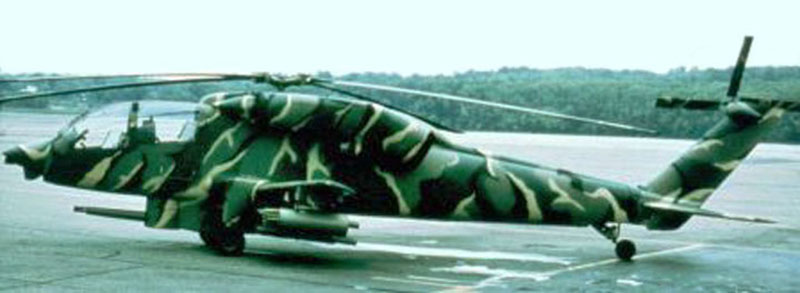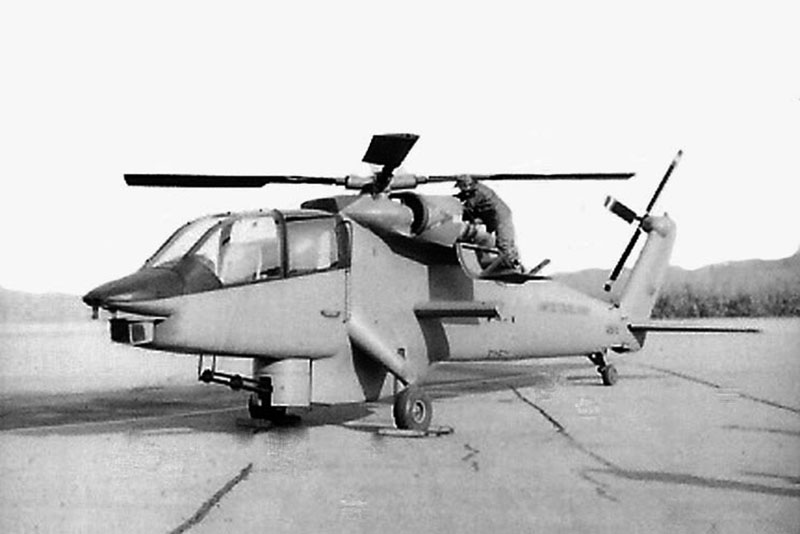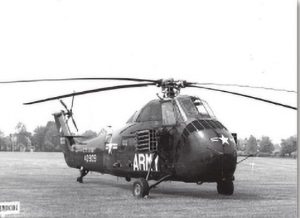Sikorsky Product History
Sikorsky S-71 Advanced Attack Helicopter (AAH)
Background
The S-71 was a gunship version of the S-70 (YUH-60 UTTAS) that was proposed to the U.S. Army in 1973 but was never built. It was proposed along with offerings by Boeing Vertol, Bell and Hughes to build and test prototypes for the Army’s new Advanced Attack Helicopter program. That competition resulted in awards given to both Bell and Hughes for what became respectively the YAH-63 and YAH-64 prototype gunships. Following a competitive fly off, Hughes was selected as the winner to produce what became the production AH-64 Apache helicopter.

What prompted the Army to embark on a new gunship program in 1973 was its cancellation of the YAH-56A Cheyenne program in 1969 following many years of technical problems experienced as that prototype was being developed. The Cheyenne was called the AAFSS, for Advanced Aerial Fire Support System, and was designed as a compound helicopter with wings and auxiliary propulsion to achieve cruise speeds in excess of 200 knots. It had won the AAFSS competition in 1965 beating out the proposed, but not built, Sikorsky S-66 compound helicopter. Both the proposed Sikorsky S-66 and the actual S-67 Blackhawk demonstrator gunship are described in other sections of this Sikorsky Product History site.
The S-71 was designed to use the UTTAS engines, rotors, gearboxes as well as parts of the tail cone, tail pylon, horizontal stabilizer and tail landing gear components. The full-scale mockup, shown in camouflage paint scheme, embodied the same low main rotor position of the early Sikorsky UTTAS as well as the original fixed-position horizontal stabilizer andfull-chord tail pylon. Had the S-71 been built, these configuration features would have been changed to reflect the design improvements that were made during the UTTAS flight development phase (1974 to 1976).
Within a year after Sikorsky Aircraft and Boeing Vertol were awarded contracts to build and demonstrate their versions of the Army’s new Utility Tactical Transport Aircraft System (UTTAS), the Army issued a request for proposal for a new attack helicopter. As a result of its experience with the AAFSS program, the Army reduced its cruise speed requirement down to the pure helicopter range. Because of that cruise speed reduction as well as other considerations, the performance and survivability requirements of this new AAH ended up to be very close to those of the UTTAS program. Cruise speed and vertical rate of climb at 4000 feet 95 degrees, as well as mission endurance, all were similar to the UTTAS as were many of the survivability requirements. Design studies confirmed that even the predicted gross weight of this new gunship would be close to that of the UTTAS prototype aircraft. Based on these important similarities in air vehicle attributes, Sikorsky proposed to marry the entire UTTAS propulsion and lift systems consisting of engines, rotors and transmission systems, to a new airframe tailored to the gunship requirements.

The rationale for this approach was that commonality of the expensive lift and propulsion systems spread across two product lines would result in both procurement and operational cost savings to both the utility and gunship programs. The Boeing Vertol offering for the AAH program was also a derivative of its YUH-61A UTTAS prototype. Neither offering was successful; the Army instead selected Bell and Hughes to build the gunship prototypes for flight evaluation. Part of the Army’s rationale was its concern that placing its two premier programs, UTTAS and AAH, with a single company would incur excessive risk. That concern was likely greater for Sikorsky since, at that time in 1973, the company was not a major part of the Army’s industrial base for helicopters.

Related Models
More information about the propulsion, rotor and drive systems of the proposed S-71 can be found in the in the YUH-60A section of the S-70 model descriptions.
by Ray D Leoni
Related Articles

Evolution of the Armed Helicopter
Military users quickly understood the flexibility and fire-power of rotary wing platforms and ultimately evolved highly integrated weapons systems ready to protect themselves and others.
